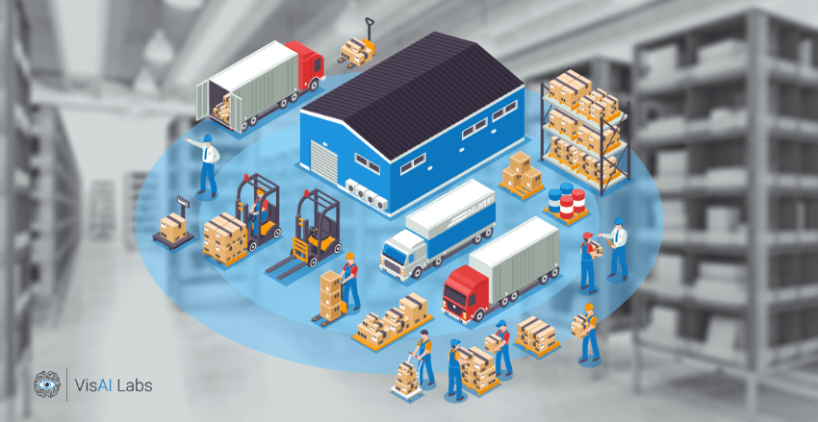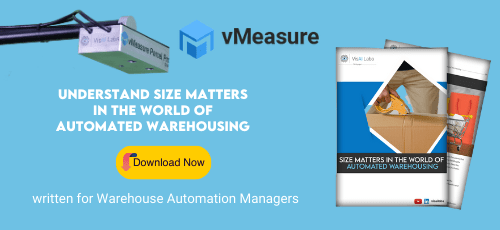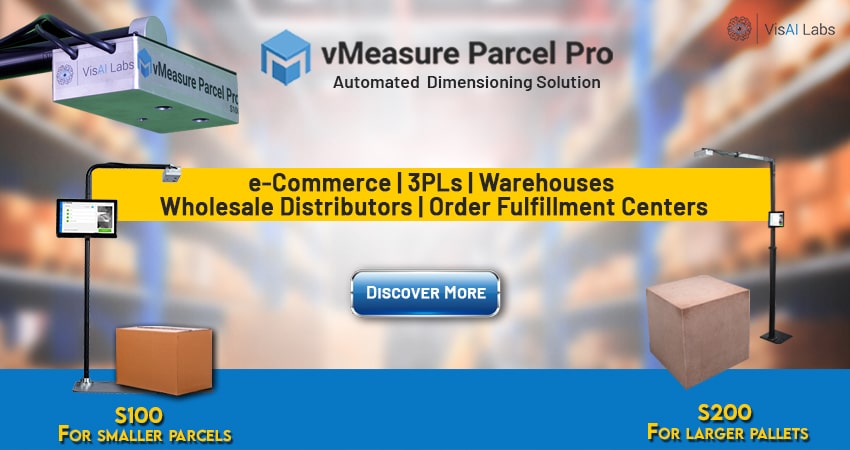Summary
AI-based computer vision technology is the trendy catchphrase emerging in the logistics and warehouse industry.
Currently, eCommerce has a tremendous need for the efficient conveyance of more packages in a short period.
Due to the downpour of eCommerce online order requests, warehouse firms have decided to deploy an automated dimensioning system to calculate the dimensional information and DIM weight of the parcels of varied sizes and shapes.
Read this blog to find out the checklist you should validate before selecting an automated dimensioning system for your business.
Customer persona:
- Operations Specialist:
Determines the storage requirements to run various processes like shipping, evaluating policies and procedures, and inventory management to better the warehouse operations using automation.
- Business Strategist:
Take responsibility for thriving various strategic plans to reach the organizations’ targets. Also, it explores the existing operational strategies to tweak profitability in the warehouse.
- Warehouse automation manager:
Maintains the statistical and financial records, ensures the quality and dispatches, and understands the modern technologies to heighten the warehouse’s working design.
- Logistics Specialist:
Sketch and optimize flexible transportation, logistics, warehouse, and customer services by understanding the up-to-date warehouse technology trends.
Introduction
What is an Automated dimensioning system?
An automated dimensioning system is a smart warehouse solution designed using AI and computer vision-based technology to calibrate the dimensional details of varied sizes and shaped parcels. These automated dimensioners have two different ranges, such as the Parcel dimensioner and Pallet dimensioner.
The parcel dimensioners help measure dimensions such as length, breadth, height, and width for small parcels, cartons, individual boxes, and other irregularly formed packages in less than a second. The pallet dimensioner, also known as the freight dimensioner, can measure the DIM weight and dimensional information of large-sized parcels.
Benefits of Automated dimensioning systems
- Improved precision and accuracy:
Accuracy and precision are critical components of the warehouse environment. With conventional dimensioning, the warehouse employee uses a ruler and tape to determine the product’s dimensional measurements. This conventional dimensional procedure usually takes longer.Due to many online orders, the manual dimensioning method has a greater risk of generating dimensional errors. And by installing an automated dimensioning system in the warehouse, we can raise accuracy and precision successfully.
- Increased slotting and cartonization:
Cartonization is an essential ingredient in the warehouse industry. We can evaluate the exact type of boxes that best fits the products instead of filling the box with dunnage and air. Once the cartonization is done perfectly, we can approximate the product’s size and allocate the space to raise your warehouse throughput.Effective slotting is the standard need for implementing a new facility. To work this out, we need to install suitable automated dimensioning in your workspace.
- Increased warehouse productivity:
Most warehouses are in a race to maximize warehouse productivity by optimizing the working paradigm and automating several processes. Several warehouse owners have decided to deploy automated dimensioners to enhance operational efficiency to reduce manual dimensioning and increase warehouse working capacity.
- Captures high-quality product images:
When warehouses receive a flood of orders, they need to keep track of their inventory for better amplification. We may capture the product’s image with an effective automated dimensioner, which aids warehouse associates during the order fulfillment process.
- Enhanced future capacity planning:
The most helpful information for planning the warehouse’s future capacity is by generating error-free dimensional data. By fixing the appropriate dimensioner, we can organize the warehouse for future-readiness.
- High-level quality control:
By enabling the product quality, we can retain customers to stick with the brand. The automated dimensioning system can detect defective products before the shipment phase.
- Reduced shipping costs:
Paying unnecessary shipping costs is inconvenient for both warehouse managers and customers. This is due to incorrect dimensional and DIM weight details being entered. The listicles below are some of the realistic considerations we can use to reduce unnecessary shipping costs: Standardize the work processes, invest in appropriate equipment to speed up the dimensioning process, and interact efficiently with customers regularly.
- Increased inventory management:
Inventory management is the soul of the warehouse industry. As the number of online requests continues to increase, we need to keep track of all the in-house and delivered product details. By integrating WMS or ERP software in the automated dimensioner, we can track all the inventory details and perform multiple tasks one at a time.
Things you need to validate before choosing an automated dimensioning system for your vertical
- What type of package your dimensioners measure?
The two most critical factors that must be considered are size and shape. Get a sense of the types of items your dimensioner would be measuring, whether they are small or big packages.
- How much are you willing to invest?
This includes the sum of money you spend on equipment. Before implementing the solution in your business, it is good to look into all of its services.
- How well the dimensioning equipment work with your shipping software?
For this, you need to understand whether your dimensioning system can work on other interfaces and devices such as WMS/ ERP software, label printers, barcode scanners, and weighing scales.
- How fast do items need to be dimensioned?
In all industries, the pace is critical; to maximize efficiency, we must always effectively speed up the working framework. So, before selecting an automatic dimensioner for your vertical, make sure the dimensioner’s speed is appropriate.
- How is the dimensional data utilized?
You can radically change your warehouse if you have error-free data. Find a unique solution to your vertical that performs various processes such as collecting, storing, and managing the device’s receiving data. By enabling the appropriate product dimensional information, we can quickly generate real-time forecast reports, which can help evaluate the fast-moving products in the market as per the latest trends.
- Do you want to collect additional data in addition to the dimensions?
Choosing the dimensioner which only identifies the dimensional information would not be the right fit. As the advancements expand, we need to look up equipment with various add-ons such as barcodes, text scanners, weighing scales, 3D cameras, and printers.
- Thoughts to consider when choosing a vendor?
When selecting a vendor, keep a list of factors in mind, such as evaluating business requirements, price, versatility, efficiency, and contract negotiating strategy.




